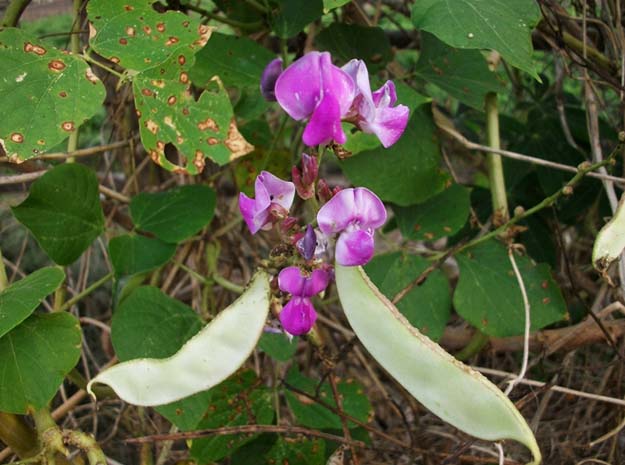
Amara അമര പയർ
Genus: Lablab
Botanical name: Lablab purpureus
PLANT NAME IN DIFFERENT LANGUAGES
Sanskrit: Nispava
Hindi: Sem, Bhatvas, Shimi
English: Lablab bean, Indian butter bean
Malayalam: Amara, Avara
MEDICINAL PROPERTIES
Amara plant is variable due to extensive breeding in cultivation, but in general, they are annual or short-lived perennial vines. The wild species is perennial. The thick stems can reach six meters in length. The leaves are made up of three pointed leaflets each up to 15 centimetres long. They may be hairy on the undersides. The inflorescence is made up of racemes of many flowers. Some cultivars have white flowers, and others may have purplish or blue. The fruit is a legume pod variable in shape, size, and color. It is usually several centimeters long and bright purple to pale green. It contains up to four seeds. The seeds are white, brown, red, or black depending on the cultivar, sometimes with a white hilum. Wild plants have mottled seeds. The seed is about a centimetre long.
The Leaves and seeds of amara is used for tonify the spleen and stomach, relieve internal heat fever, relieve summer beat-and damp and remove dampness to stop diarrohea, etc., leukorrhea, with reddish discharge, infantile malnutrition and anti-cancer, etc. The seeds are used to stimulate gastric activities, for vomiting and diarrhoea in acute gastro-enteritis, thirst in heat-stroke, rheumatic arthritis, sunstroke, as an antidote against fish and vegetable poisoning and to treat colic and cholera.
